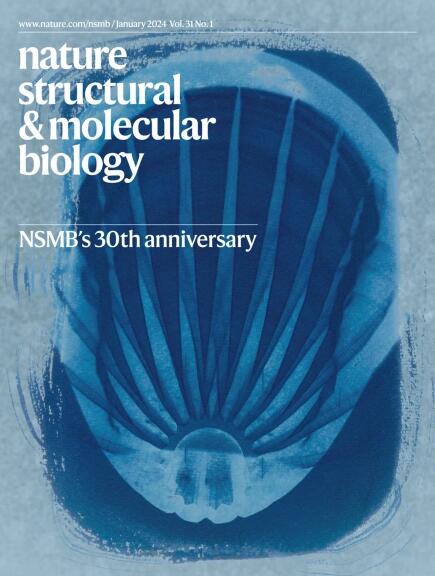细菌剪切酶转移泛素
IF 10.1
1区 生物学
Q1 BIOCHEMISTRY & MOLECULAR BIOLOGY
引用次数: 0
摘要
泛素化是真核细胞中一个重要的翻译后修饰,通过诱导蛋白质降解或改变蛋白质活性,在蛋白质功能调节中起着关键作用。该系统受到严格的调控,对维持细胞稳态和免疫反应至关重要,特别是在识别和消除致病威胁方面。然而,细胞内细菌已经进化出复杂的策略来破坏宿主的防御机制,包括分泌去泛素酶(DUB)效应物,去除泛素标记,从而干扰免疫信号并促进细菌适应性。Hermanns等人发现了一个与真核josephin型DUBs结构相关的细菌DUBs家族,其表现出独特的不可逆去泛素化机制。传统的去泛素酶和这些泛素c端剪切酶(UCCs)的不同之处在于,前者在c端diGly基序之后切割泛素,而后者在该基序之前切割,留下一个残余片段,标志着底物不可逆地去泛素化。研究人员对底物结合的剪切酶和传统的dub进行了详细的结构分析,以确定观察到的切割位移,发现这可归因于不同的泛素取向。结构分析进一步表明,UCCs具有独特的催化结构,有利于不可逆裂解,而不是Josephin DUBs所表现出的可逆水解。这种差异主要是由催化口袋的进化变化驱动的,其中关键残基的重新定位强制了一种切割机制,使泛素的残余片段附着在底物上,有效地阻止了再泛素化。本文章由计算机程序翻译,如有差异,请以英文原文为准。
Bacterial clippases shift ubiquitin
求助全文
通过发布文献求助,成功后即可免费获取论文全文。
去求助
来源期刊

Nature Structural & Molecular Biology
BIOCHEMISTRY & MOLECULAR BIOLOGY-BIOPHYSICS
CiteScore
22.00
自引率
1.80%
发文量
160
审稿时长
3-8 weeks
期刊介绍:
Nature Structural & Molecular Biology is a comprehensive platform that combines structural and molecular research. Our journal focuses on exploring the functional and mechanistic aspects of biological processes, emphasizing how molecular components collaborate to achieve a particular function. While structural data can shed light on these insights, our publication does not require them as a prerequisite.
 求助内容:
求助内容: 应助结果提醒方式:
应助结果提醒方式:


